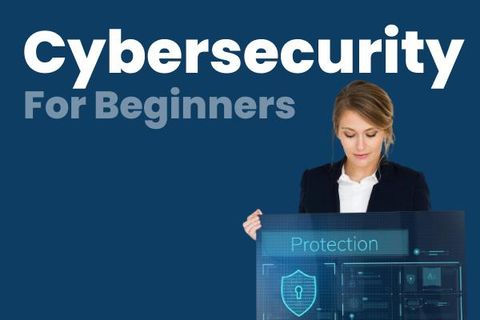Cybersecurity exists to counteract rising digital threats such as malware, ransomware, phishing, and data breaches. As more business operations move online, the risk of cyberattacks grows, making cybersecurity a critical part of modern business strategy.
Whether a company is a small startup or a large multinational corporation, cybersecurity helps ensure continuity, protect reputation, and maintain trust.
Why Cybersecurity Matters in Today’s World
Cybersecurity is no longer just a technical issue. It is a business, legal, and operational concern that impacts every level of an organization.
Who It Affects
-
Employees, who use devices, cloud software, and internal systems every day
-
Customers, who trust companies with their personal and financial information
-
Business owners and managers, who are responsible for regulatory compliance and data security
-
IT and security teams, who must prevent, detect, and respond to threats
Problems Cybersecurity Helps Solve
-
Data breaches, which can expose sensitive data and lead to identity theft
-
Financial fraud, often caused by phishing or unauthorized access
-
Operational downtime, which can interrupt services and cause loss of revenue
-
Reputation damage, which can impact customer trust and investor confidence
-
Legal and regulatory penalties, due to failure to protect personal data
By investing in cybersecurity, enterprises can reduce risk, improve resilience, and remain competitive in a digital-first economy.
Recent Cybersecurity Trends and Developments
The past year has seen a number of developments in the cybersecurity space, shaped by emerging technologies and evolving threats.
Rise in Ransomware Attacks
In 2024, ransomware continued to be one of the most common and damaging types of attacks. According to a report by Cybersecurity Ventures, global ransomware damage costs are projected to reach affecting both small businesses and large enterprises.
Artificial Intelligence in Security
More companies are integrating AI-based security tools to detect unusual patterns in user behavior, automate threat response, and enhance monitoring. These tools can reduce human error and respond to threats faster.
Zero Trust Architecture
The Zero Trust model, which assumes that no user or device is automatically trusted, is gaining popularity. Enterprises are shifting to this model to improve access control and limit lateral movement by attackers.
Cloud Security Focus
As businesses continue moving to the cloud, cloud security is becoming a top priority. In 2024, many organizations adopted multi-cloud security frameworks to manage risk across different platforms.
Employee Training
Cybersecurity awareness programs are now a standard part of company training. Many companies updated their training content in 2024 to include simulations and real-world scenarios.
Cybersecurity Laws and Policies
Cybersecurity is not just best practice—it is also a legal requirement in many countries. Organizations are expected to protect user data, report breaches, and comply with privacy regulations.
Examples of Key Cybersecurity Regulations
| Country/Region | Law or Regulation | Key Focus Areas |
|---|---|---|
| United States | HIPAA, CCPA, Cybersecurity EO | Health data, privacy, federal systems |
| European Union | GDPR | Data protection and breach reporting |
| India | IT Act, DPDP Bill (2023) | Personal data processing and storage |
| Australia | Privacy Act 1988, ACSC Guidelines | Consumer data and cyber defense |
| Singapore | Cybersecurity Act 2018 | Critical infrastructure protection |
Key Requirements for Businesses
-
Data encryption for sensitive information
-
Breach notification within a set time frame (varies by law)
-
Regular audits and risk assessments
-
Consent and data transparency for personal data
-
Access controls to prevent unauthorized data access
Failing to meet these legal obligations can result in fines, lawsuits, and long-term reputational harm.
Tools and Resources for Enterprise Cybersecurity
There are many reliable tools and platforms that help organizations monitor, detect, and respond to cybersecurity risks.
Cybersecurity Platforms
-
Microsoft Defender for Endpoint: Protects networks and devices with real-time threat detection.
-
CrowdStrike Falcon: Cloud-native endpoint protection and threat intelligence.
-
Cisco SecureX: Integrated security platform offering visibility across devices, users, and applications.
-
Fortinet Security Fabric: Offers a range of tools for network, cloud, and application security.
Security Awareness Training Tools
-
KnowBe4: Offers simulated phishing tests and interactive training modules.
-
Cofense: Focuses on phishing defense and employee reporting tools.
Password and Access Management
-
1Password Teams: Secure password management for organizations.
-
Okta: Identity management and multi-factor authentication.
-
Duo Security: Two-factor authentication and device verification.
Cybersecurity Resources and Frameworks
-
NIST Cybersecurity Framework: www.nist.gov/cyberframework
-
SANS Institute: Offers free and paid resources on cybersecurity training and best practices.
-
Cybersecurity & Infrastructure Security Agency (CISA): www.cisa.gov provides alerts, toolkits, and guidance for businesses in the U.S.
-
ENISA (European Union Agency for Cybersecurity): Offers reports, recommendations, and threat landscape updates.
Internal Practices and Policies
-
Incident response plans: Define steps to take during a cyberattack.
-
Data classification policies: Organize data based on sensitivity and access level.
-
Regular security audits: Identify and fix system vulnerabilities.
Frequently Asked Questions
What is the biggest cybersecurity threat to businesses today?
Ransomware is currently the most damaging and common threat. It involves encrypting an organization’s data and demanding a ransom payment for access. Other major threats include phishing attacks, insider threats, and supply chain vulnerabilities.
How can small businesses improve cybersecurity on a limited budget?
Small businesses can start with basic measures like using strong passwords, enabling multi-factor authentication, installing antivirus software, backing up data regularly, and training employees on common scams.
What is Zero Trust, and why is it important?
Zero Trust is a security model that assumes no user or device is trusted by default, even if they are inside the network. It is important because it helps limit access and prevent attackers from moving freely within systems after a breach.
Do all businesses need to follow cybersecurity regulations?
Yes. Any organization that handles customer data, payment information, or sensitive business information must follow relevant data protection and cybersecurity laws based on their country or industry.
How often should cybersecurity training be provided to employees?
It is recommended to provide cybersecurity training at least once a year. However, ongoing education through quarterly updates, simulated phishing tests, and short interactive modules can significantly improve awareness and reduce risk.
Final Thoughts
Enterprise cybersecurity is essential for protecting digital assets in a connected world. It is no longer optional, regardless of the size or type of business. Understanding the basics like threat types, legal responsibilities, tools, and training can help organizations build a strong foundation for digital safety.
With new threats emerging regularly, staying updated, vigilant, and proactive is key. Whether you are a business leader, IT professional, or employee, learning the fundamentals of cybersecurity is a smart and necessary step for the future.



